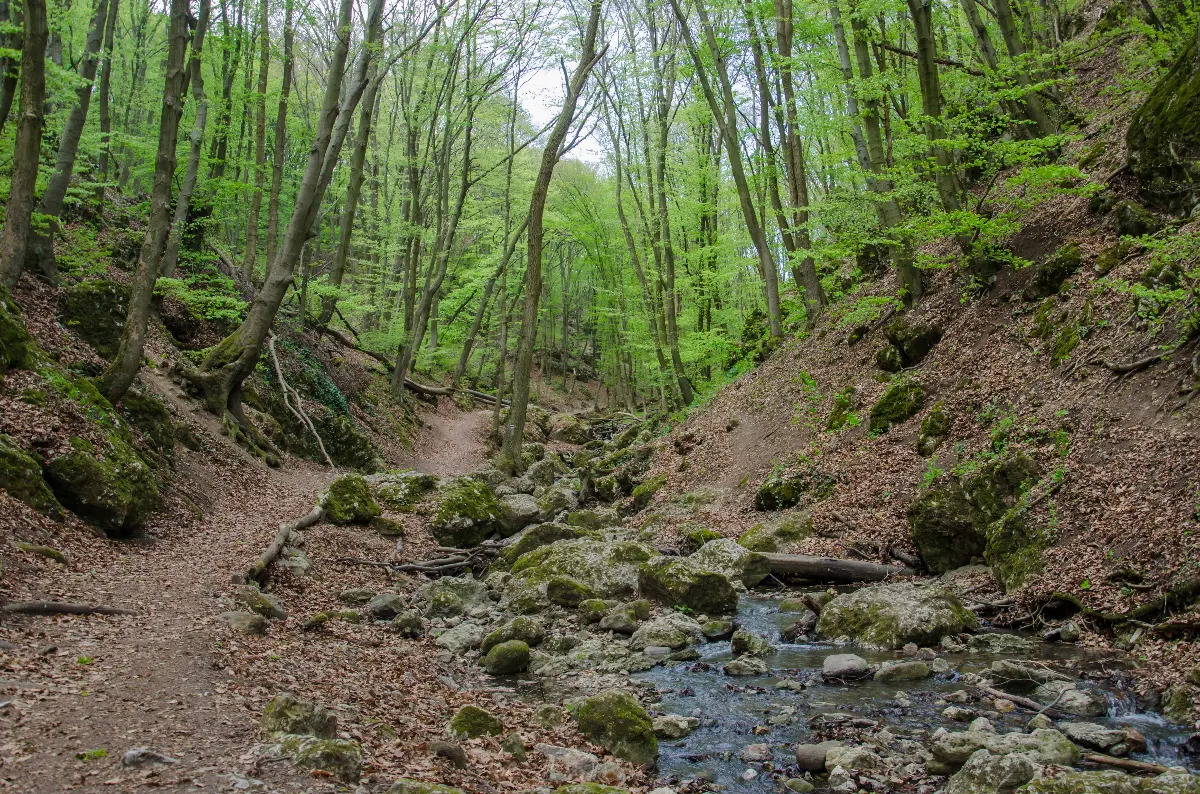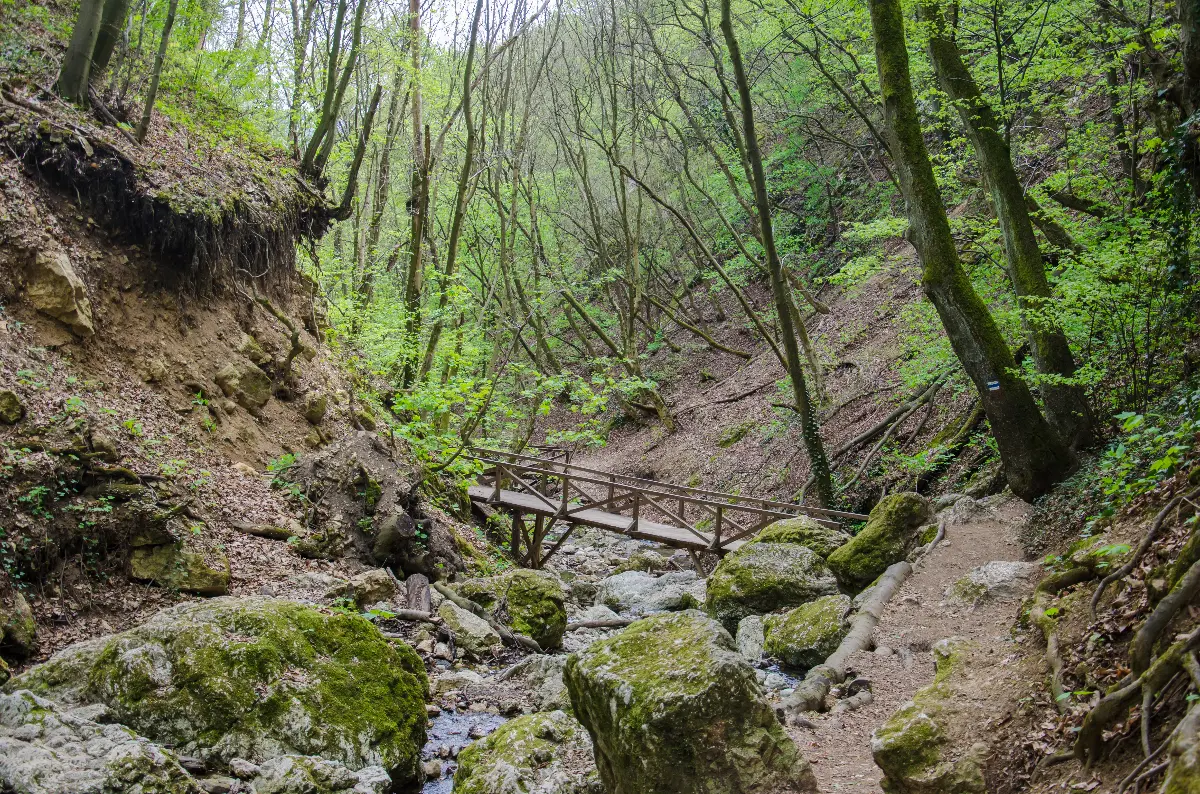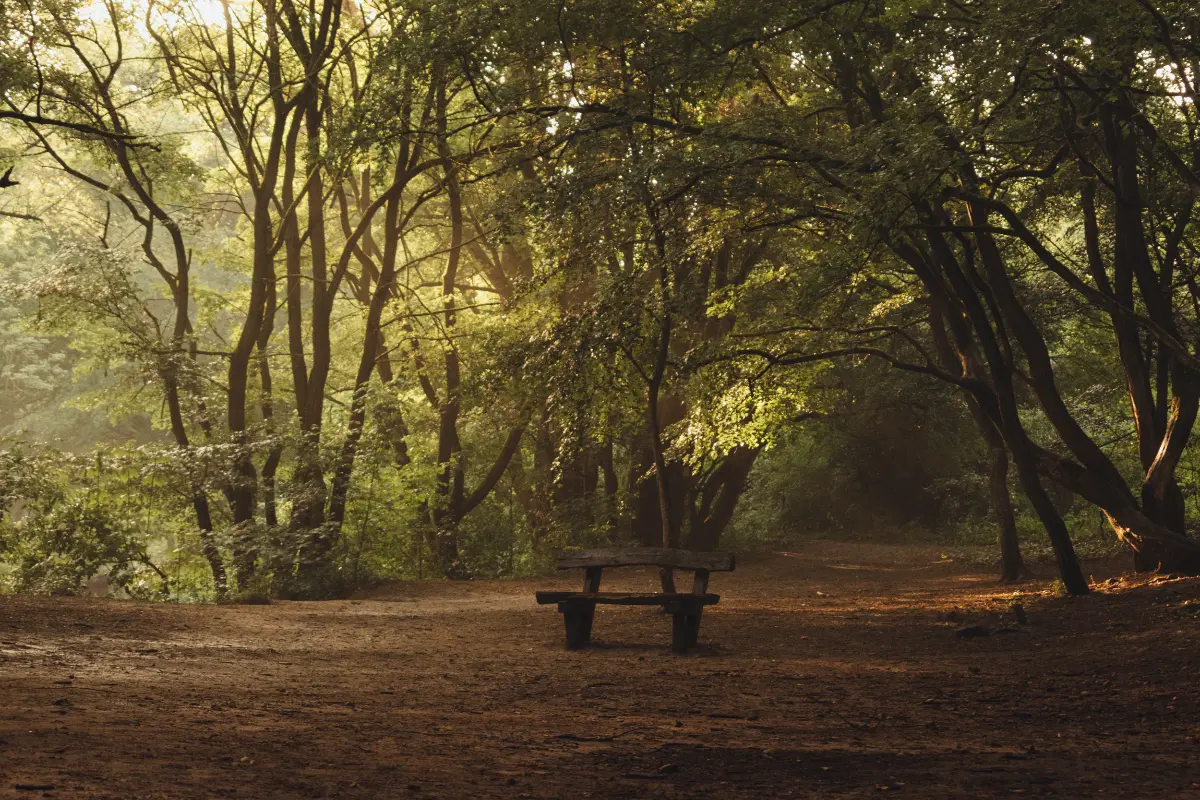
Helyszín címkék:
Here’s why you should visit the Dera Notch – even if you are not a Lord of the Rings fan
Hype&Hyper
The longest watercourse of the Pilis, the Dera, also known as the Kovács Stream, meanders from the Pilisszentkereszt area all the way to Szentendre. The name Dera is a Serbian expression for gap, or crevice, which accurately describes the workings of the small stream: the waterfall dug a deep cavity in the limestone, which widened over time to form a wild and scenic stream valley, to the delight of us all. The well-marked trail that leads through it is guided by wooden bridges and large boulders, skirting the stream and shaded by huge trees. The valley has a special climate, and although the small stream often runs dry in the summer heat, the cool air is not completely dispelled by the heat. The notch is also crossed by the route of the National Blue Trail, but everyone can find circular routes of suitable length and difficulty through the valley.

Accessibility
By car from Budapest, it takes about 50 minutes to reach the entrance of the notch by taking the main road 10 or 11. There is a signposted car park for hikers, which, although quite large, can fill up quickly in the high season. Those who prefer public transport can take the train from the capital to Pomáz, from where they can take a short bus ride to Pilisszentkereszt, but the notch can also be reached on foot by following the Blue Hiking Trail through the village.

Routes
For those travelling with smaller children, we recommend the small circular hike of about 4 km, the most exciting part of which is the hiking section in the notch valley: wooden bridges, rocky gullies, water-swallowing caves, moss-covered giant stones – a real Tolkien world awaits adventurers.At the end of the section, follow the blue cross signpost up to Szentkút. The name refers to a spring of mineral-rich water, a place of religious veneration, which has been a place of pilgrimage for about 200 years: many have attributed their miraculous healing to the power of spring water. From here, follow the yellow double cross sign accompanying the pilgrimage routes back to Pilisszentkereszt.
For those looking for more of a challenge, a 13 km circular hike is an exciting challenge, starting from the Som Hill tourist chalet, leading along the back of the Long Hill, then also passing by Szentkút and heading into the well-known short, well-maintained section of the notch.
Since the valley is at its most beautiful when the stream is babbling and rippling with tiny bubbles, we recommend that you explore it before the spring arrives, when it is often rainy.
Equipment

The route is a few kilometres long and the terrain varies, so it is worth choosing your footwear carefully: in cool weather, you might want waterproof boots that secure your ankles, but in summer, you can also walk around in comfortable hiking sandals.
It is worth starting the trip with enough food – there are no shops, buffets or restaurants nearby, but near the notch, there is the aforementioned, beautifully renovated tourist house on the Som Hill, sitting on the benches of which you can have a snack in comfort.
The Dera Notch can be an exciting destination for young and old all year round, and in spring, it’s a real treat: the trees are budding, the stream has enough water to make all the little waterfalls splash, and the wild flowers cover the valley like a colourful blanket. If you are credulous then go and find it out for yourself.





